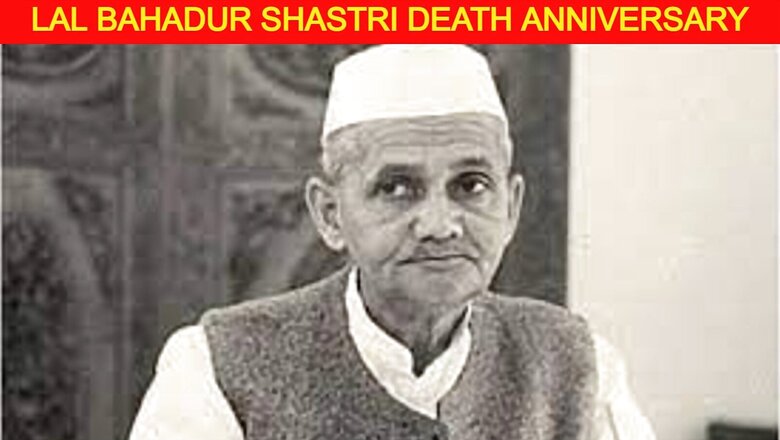
222
views
views
Lal Bahadur Shastri died on January 11, 1966, a day after signing the famous Tashkent Agreement. An ardent follower of Mahatma Gandhi, Shastri has lived a life that people can take inspiration from
LAL BAHADUR SHASTRI DEATH ANNIVERSARY: India’s second Prime Minister Lal Bahadur Shastri was born on October 2, 1904. He spent his early days at his maternal grandparent’s home in present-day Uttar Pradesh’s Mughalsarai. Lal Bahadur Shastri joined the Indian National Congress and took an active part in India’s struggle for freedom.
He died on January 11, 1966, a day after signing the famous Tashkent Agreement. An ardent follower of Mahatma Gandhi, Lal Bahadur Shastri has lived a life that people can take inspiration from.
Here are 10 inspiring facts about the second Prime Minister of India:
- Non-cooperation MovementLal Bahadur Shastri was only 17 when he was imprisoned for participating in Mahatma Gandhi’s non-cooperation movement in 1921. Though the imprisonment was only for a short time, he was jailed several times during India’s struggle for independence.
- Title Of ShastriLal Bahadur Shastri completed his higher education at the Kashi Vidyapith in Varanasi. This is where he earned the title of Shastri, a scholar or the learner of holy scriptures.
- Tashkent AgreementTashkent Agreement was signed on January 10, 1966, by India’s Prime Minister Lal Bahadur Shastri and Pakistan’s President Mohammad Ayub Khan, ending the Indo-Pak War of 1965. Unfortunately, Lal Bahadur Shastri passed died the next day, January 11, 1966.
- Opposed The Casteist PracticesHe was vehemently opposed to the caste system practices in India. Born Lal Bahadur Shrivastava, he dropped his family name to show his opposition to casteist practices.
- White RevolutionWith Lal Bahadur Shastri as PM, India saw the adoption of new methods for animal husbandry. The country saw an increase in its milk production in a matter of a few years.
- First Indian To Posthumously Receive The Bharat RatnaLal Bahadur Shastri was the first person to posthumously receive the Bharat Ratna, India’s highest civilian honour in 1966.
- Green Revolution PromotionIndia also saw the Green Revolution. Shastri was instrumental in its promotion. It saw an increase in the use of seeds with improved genetics, double cropping in the existing farmland, and expansion of farming areas.
- Posts in GovernmentLal Bahadur Shastri held several portfolios in the Union Cabinet, including the Minister for Railways; Minister for Transport and Communications; Minister for Commerce and Industry; and Home Minister.
- Resignation As Minister For RailwaysTwo major railway accidents in 1956 prompted Lal Bahadur Shastri to resign from his post as the Minister for Railways twice. He felt responsible for the accident which claimed many lives. While the first was not accepted, then-Prime Minister Jawaharlal Nehru had to accept the second resignation.
- The Unusual DowryIn 1927, he tied the knot with Lalita Devi. While the wedding was traditional in all senses, Shastri would not accept anything more than a spinning wheel and a few yards of handspun cloth as the dowry.
Read all the Latest Lifestyle News here




















Comments
0 comment